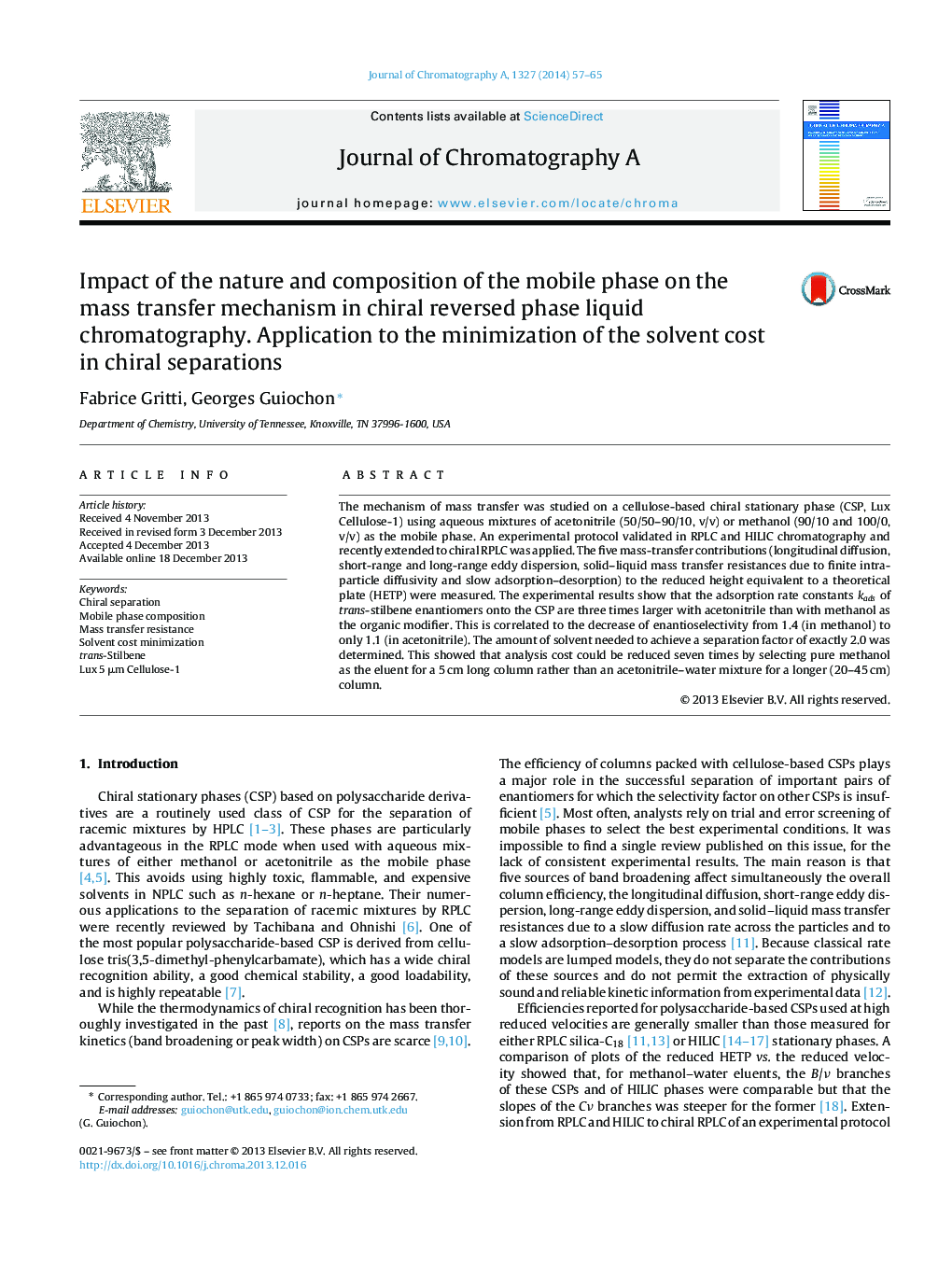| کد مقاله | کد نشریه | سال انتشار | مقاله انگلیسی | نسخه تمام متن |
|---|---|---|---|---|
| 1199695 | 1493599 | 2014 | 9 صفحه PDF | دانلود رایگان |
• The mass transfer kinetics on a cellulose-based chiral stationary phase was studied in detail.
• The mobile phases used were aqueous solutions of acetonitrile or methanol.
• A larger enantio-selectivity is observed with methanol than with acetonitrile–water mixture.
• The adsorption rate constant of trans-stilbene is three times larger with ACN than with MeOH.
• The analysis cost is seven times less with pure methanol– than with acetonitrile–water mixture.
The mechanism of mass transfer was studied on a cellulose-based chiral stationary phase (CSP, Lux Cellulose-1) using aqueous mixtures of acetonitrile (50/50–90/10, v/v) or methanol (90/10 and 100/0, v/v) as the mobile phase. An experimental protocol validated in RPLC and HILIC chromatography and recently extended to chiral RPLC was applied. The five mass-transfer contributions (longitudinal diffusion, short-range and long-range eddy dispersion, solid–liquid mass transfer resistances due to finite intra-particle diffusivity and slow adsorption–desorption) to the reduced height equivalent to a theoretical plate (HETP) were measured. The experimental results show that the adsorption rate constants kads of trans-stilbene enantiomers onto the CSP are three times larger with acetonitrile than with methanol as the organic modifier. This is correlated to the decrease of enantioselectivity from 1.4 (in methanol) to only 1.1 (in acetonitrile). The amount of solvent needed to achieve a separation factor of exactly 2.0 was determined. This showed that analysis cost could be reduced seven times by selecting pure methanol as the eluent for a 5 cm long column rather than an acetonitrile–water mixture for a longer (20–45 cm) column.
Journal: Journal of Chromatography A - Volume 1327, 31 January 2014, Pages 57–65
